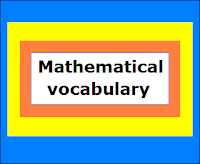
Definition and introduction:
A set of objects arranged in a specific order according to some specific rule is called a sequence in Mathematics. A sequence of numbers is a set of numbers arranged in some specific order according to a specific rule. A sequence of algebraic terms/expressions is a set of algebraic terms or expressions that is arranged according to some specific rule.
Finite and Infinite Sequences:
A finite sequence is a sequence in which the number of terms or elements is limited. A finite sequence is denoted by a1, a2, a3, ... , an or by T1, T2, T3, ... , Tn where an and T1 are the last terms of the particular sequence.
An infinite sequence is a sequence in which the number of terms or elements is unlimited; it has no upper bound. An infinite sequence is denoted by a1, a2, a3, ... or by T1, T2, T3, ... Optionally an infinity symbol (∞) may be added at the end of an infinite sequence as in a1, a2, a3, ... , ∞
The general term or the kth term of a sequence is denoted by Tk. 'k' can be any natural number.
What are sequences are what are not sequences:
A sequence may be denoted by an explicit formula, like Tn = 2 + n, or it may be denoted by a logical statement like Tn = nth prime number. It is not necessary that a set of numbers be arranged according to an explicit formula in order for it to be called a 'sequence'; it can also be arranged according to some logical statement that does not have an explicit mathematical formula but is nonetheless mathematically logical in order for it to be called a sequence.
For example, the set of prime numbers is a sequence although it is not defined by an explicit formula (The formula for obtaining the nth prime number has not yet been discovered)
On the other hand, a set of numbers that does not follow any logical patter - that is neither defined by a formula nor by a logical statement - is not called a sequence in mathematics. For example, 2, 6, 3, 5, 1, 6, 7 is not a sequence because it does not follow any logical patter and the next number after 7 can not be obtained.
Notation of sequences:
A sequence of numbers is written by separating each number by a comma. When there are a large number of numbers in a sequence, it is sufficient to write the first three numbers separated by commas, then, after a comma, a couple of dots, and then, after another comma, the last term of the sequence. For example, the finite sequence 0, 2, 4, 6, 8, 10, 12, 14, 16, 18, 20, 22, 24 can be written as 0, 2, 4, ... , 24
In an infinite sequence, you can leave set of trailing dots after the first three values. Sometimes an infinitey symbol is put at the end of an infinite sequences. For example, the infinite sequence of prime numbers can be written either as 2, 3, 5, ... or 2, 3, 5, ... to ∞.
No comments:
Post a Comment